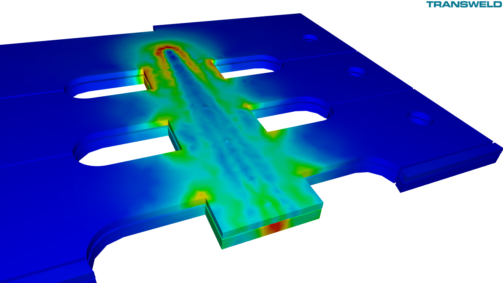In markets where the safety of welded assemblies is essential, analysis TRANSWELD® offers a global and innovative solution to anticipate welding defects. Our simulation software integrates multi-physical models to simulate the real behavior of the metal in the liquid/mushy state to perform a complete analysis of the material evolution.
TRANSWELD® is a 100% predictive welding simulation software solution. It also predicts the microstructure of the solid-state assembly. You will be sure your welded part is conformed without going through the prototyping stage.


